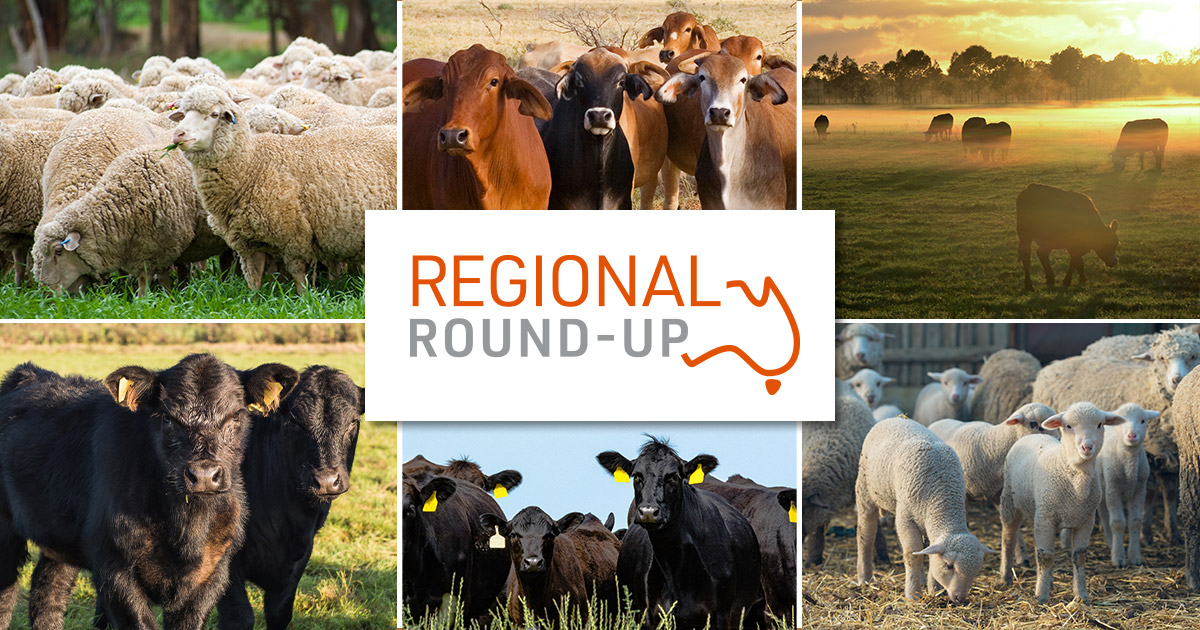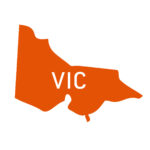Regional Round-Up

Welcome to the second instalment of our regional round-up – StockCo’s monthly chance for you to find out exactly what’s going on in the livestock industry across Australia.
 |
National overview – Chris Howie South and Western Australia have remained relatively dry through the agricultural areas and are awaiting the preferred April break to start sowing. Many who had expected a wet summer had sown dry grazing crops in the hope of lambing or calving onto green feed in those states. Supplementary feeding is well underway for both lambing and calving. Livestock targeted at winter sale periods are doing well on pasture that’s benefited by recent rains or supplementary feed programs, with anticipation of price-for-weight reward. At present, both SA and WA are in normal seasonal patterns, and have not received the rainfall of the centre and east coast. Cattle prices remain at record levels, with joined females still providing the best opportunities considering recent rains. Sheep and lambs are entering a seasonal period of price volatility, with many waiting to see what the supply position will be over the next four months before committing. Normally this period will see mutton and lamb prices gradually strengthen, until the new season supply appears. The Queensland and NSW rains have filled in many dry areas and had an immediate impact on the supply of store and prime cattle. This, in turn, will see a continuation of the strong cattle prices through the winter.COVID is still an inhibiting factor on the industry calendar, but many events have resumed, with the recent NTCA event in the NT, the upcoming Royal Show series and Beef 21 in Rockhampton. Many state-based industry days and events are planned, and it’s well worth searching those event calendars so you don’t miss out. |
 |
Queensland – Angus Creedon Queensland in general has received great rain in March, so the cattle market’s still very strong and will continue to increase over the next month or so. In the next six weeks there’ll be a lot of oat crops ready to be grazed in southern Queensland and northern New South Wales, so that will encourage the price of cattle to stay where it is, if not improve. With large areas of Queensland having had such good rain, they’ll be able to hold on to the cattle they’ve got and the processor supply will be very tight – they’ll be relying on the feedlot market for a constant supply of cattle. Some of the biggest processors, including JBS, are shutting down for a couple of weeks and directing cattle to their other plants.In general, everything’s looking very good going into winter – there are still some dry areas in north west Queensland, but overall it’s not too bad and, despite not seeing much of an increase in numbers of animals, the prices have gone up. |
 |
NSW – Toby Hammond Most parts of eastern New South Wales have received substantial rainfall, which has set virtually everyone up for a pretty reliable autumn. This, in turn, has sparked a lot of buying activity and created huge potential for female trades. Grazing crops are looking very good and the outlook is positive for future feeds. Prices of live weaner cattle – 200-300kg heifers – are very strong, though there’s not a lot of forward pricing from feedlots or processors. When it comes to the lamb market, that’s now softened a little – however, there are forward prices out there and that’s made store lamb prices stronger. Finally, western New South Wales has missed out on rain and it’s starting to cool off, so further down the track there could be opportunities for purchases out of these areas. |
 |
Victoria – Michael Phelan In western Victoria in March and April the supplementary feeding ramps up, and right now it’s at its peak whilst we wait for the break in seasons. Having not had any rain come down from New South Wales it’s quite dry over this side of the state, but on the eastern side patchy showers that have led to enough rain to get a germination – It’s an anxious wait to see if it’s a true break in the dry.Where graziers have got rain, or there’s confidence they’ll get it, there’s been interest in ewes. A lot of farmers over here are broadacre croppers, and they’re currently preparing their paddocks and burning stubble. A lot of croppers with lambs in containment are now looking to offload them, so there’ll be an influx of lambs available over April and May. Graziers who aren’t on a pipeline of water get a bit anxious at this time as it’s not much fun having ewes lambing into dusty paddocks, so after three weeks or so the west will really be looking to see if those rains come. |


